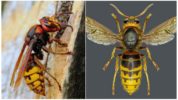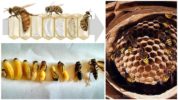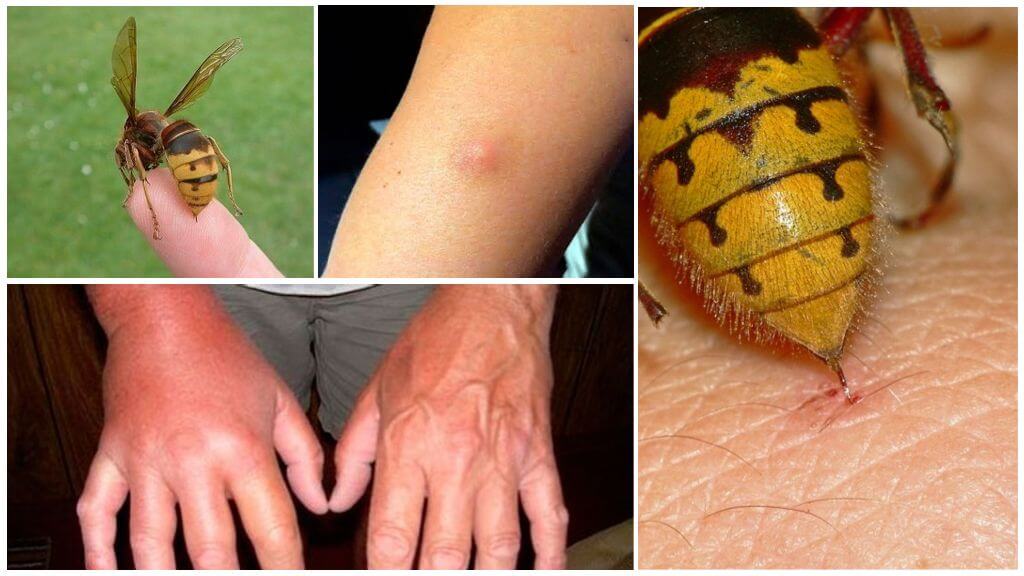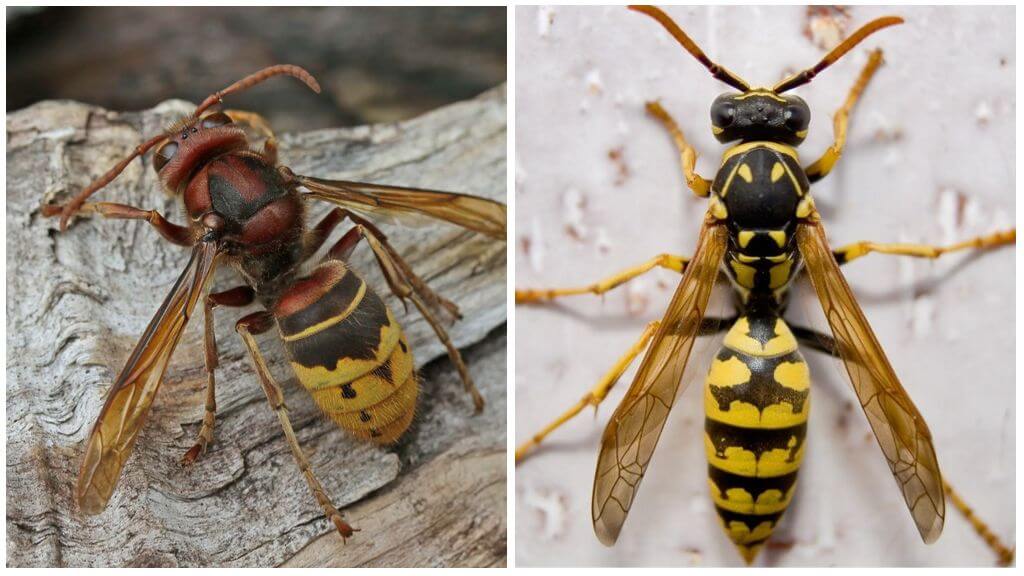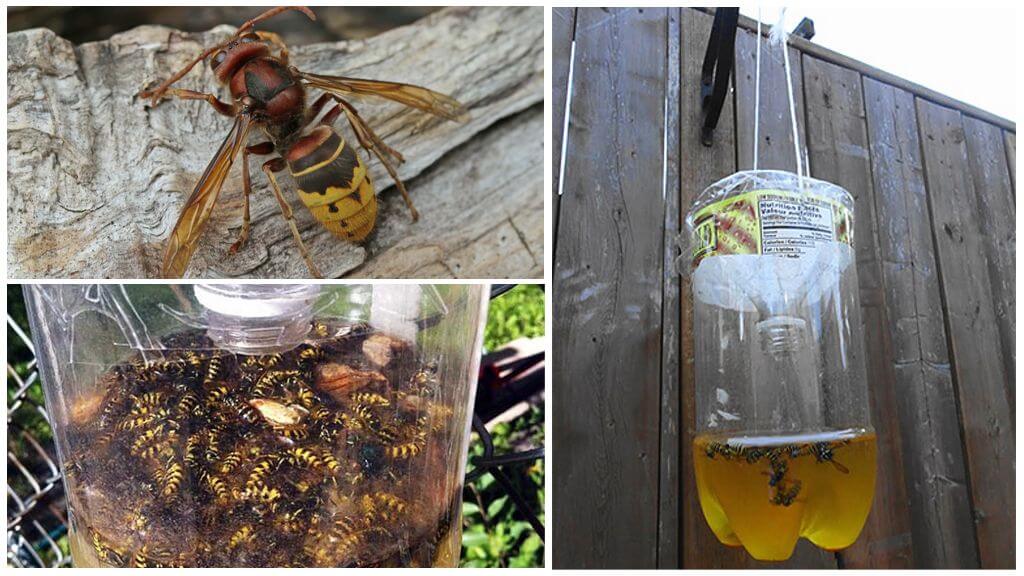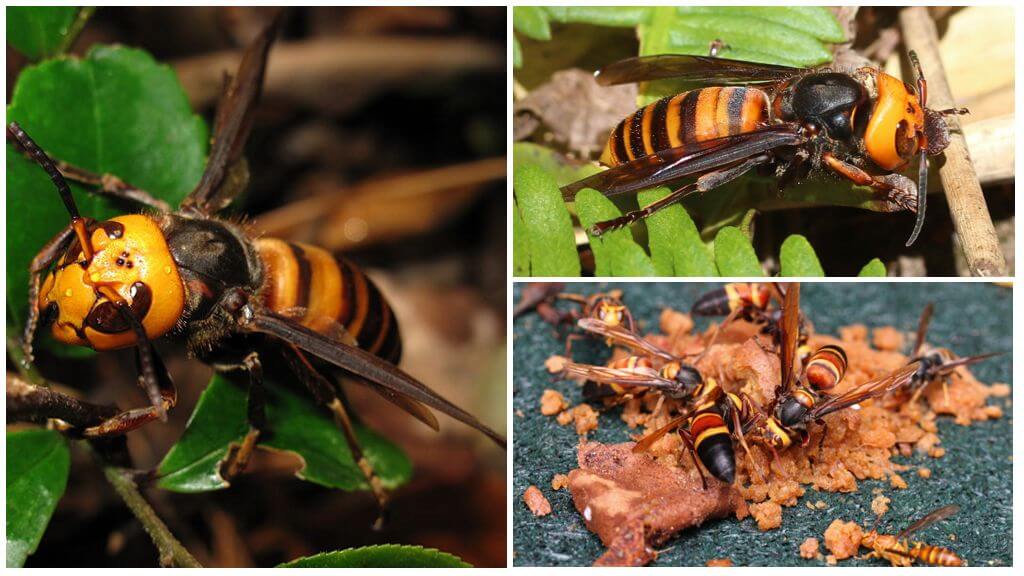- European Hornet
- Hornet breeding
The hornet is the largest wasp. Translated from Latin, Vespa means wasp. The insect is distributed throughout Europe, lives in the wild, but often settles near human possessions. The bite of the European hornet is painful, causes an allergic reaction, but does not pose a danger to life.
Description of appearance
Ordinary hornet - a huge wasp in size from 2 to 3.5 cm. The length of the uterus varies from 25 cm to 35 cm. In contrast to wasps, the hornet has a large head with a wide top. The striped abdomen in females is one segment shorter than in males.
The uterus and working individuals have a sting - an underdeveloped ovipositor. In a calm state, the sting is not visible, the insect uses it as a defense tool.
On a note!
The sting has no notches like bees, therefore it can be used repeatedly.
Three pairs of paws, a long mustache on the head, large eyes and a few simple eyes. The abdomen is striped - stripes of black, yellow color alternate. The boundaries are blurred, unlike wasps. Slim waist, transparent wings. The hornet is ordinary in the photo below.

Nest
Ordinary hornet - skilled architect, experienced builder. Insects build large multi-tiered nests different colors - gray, brown, brown, purple, white, yellow, beige.
European hornet builds nests in abandoned bird nests, hollows of old trees, under branches, on a cliff, under the roof of farm buildings, in attics. The shape of the nest resembles a pear, oval, ball. It reaches 70 cm in length and 40 cm in width.
Interesting!
As a building material, insects use wood and bark. Chew thoroughly, resulting in an adhesive mass. After hardening, it becomes like paper, so the hornet's nest is often called paper.
Inside there are numerous entrances, exits, many chambers for eggs, larvae, food supplies, lounges, the abode of the uterus.
Nutrition
Adults prefer plant foods, eat juices rich in sugar. Insects love:
- ripe apples;
- pears
- berries;
- plums
- nectar;
- honey.
Quite often, common hornets attack bee nests and eat up stocks of honey. Larvae require protein food, so adult individuals to voracious offspring get insects:
- grasshoppers;
- flies;
- dragonflies;
- spiders
- butterflies;
- bees;
- Zhukov.
The common hornet enters a deadly battle with prey, paralyzes it with poison, then finishes it off.
Breeding

A fertile female, after mating, is able to reproduce continuously offspring all her life. After mating in early spring, it flies around the territory, looking for a favorable place for arranging the future nest. It builds several hundred, lays one egg in each. After a few days, larvae with excellent appetite appear.
After 2 weeks, the larvae turn into pupae, from which young insects independently select after a few days. The society of ordinary hornets is divided into castes, each member performs its functions. Young prolific females mate with males, equip their nests. Working individuals throughout the warm season are engaged in the construction of the nest, obtaining food, guarding, caring for the uterus, larvae.
The life expectancy of the uterus is about 2 years. The insect winters in the crevices of the tree, under the roof, outbuildings, old hollows. In the spring he is building a new nest. Working individuals live for about a month, males die 2 weeks after mating.
Hornet bite, consequences
Despite the threatening appearance, insects do not differ in aggressive behavior, people, animals are not attacked if they do not feel threatened. Having accidentally flown into a person’s house, an ordinary hornet slowly explores the area in search of a way out. To get rid of it, just leave the window, window, door open.
On a note!
The family of common hornets is dangerous if you disturb the nest. All members of society rush to the defense, attack the enemy with lightning speed, inflict painful bites. The situation is dangerous with a severe allergic reaction, health problems.
The poison causes irritation, pain, swelling, redness, swelling. However, in most cases, single bites do not cause much harm. To alleviate the condition, it is enough to wipe the affected area with alcohol, rinse with cold water, and treat with any antiseptic. Signs of bites go away within a few days.
A severe allergic reaction with nausea, vomiting, fever, weakness, difficulty breathing is possible in the presence of individual intolerance to the poison. In this case, it is required to take an antihistamine, treat a sore spot with an antiallergic agent, and seek help from specialists.
